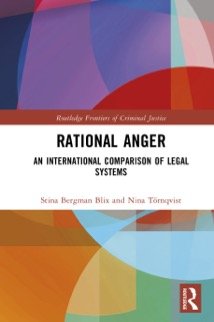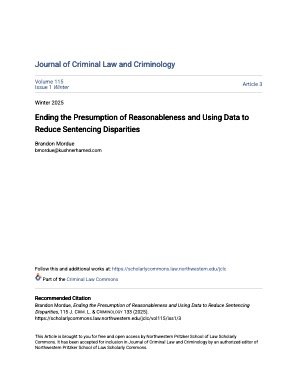By Ammar Khalid Will Engelhardt Ashlin Oglesby-Neal Arielle Jackson Olivia Stuart Andreea Matei
Mississippi’s prison population grew more than 400 percent between 1980 and 2013, 1 and in 2013 it was projected to increase by nearly 2,000 people over the next 10 years at a cost of $266 million (Pew 2014). In response, Mississippi leaders began exploring options for prioritizing prison space to get a better public-safety return on state correctional spending (Warnberg and Olsen 2019). Part of this response was to implement, via the state’s Justice Reinvestment Initiative (JRI) process, front-end reforms to drug policy and practice starting in 2014 to divert people from the criminal justice system when possible and to connect people to treatment when appropriate. In this report, we examine the implementation and outcomes of those reforms. In 2013, state leaders requested assistance through JRI, an initiative funded by the US Department of Justice’s Bureau of Justice Assistance that is a “data-driven approach to managing criminal justice populations and investing savings in strategies to reduce recidivism and improve public safety” (Harvell et al. 2021, iii). With technical assistance from The Pew Charitable Trusts and the Crime and Justice Institute, the state convened a task force, the Corrections and Criminal Justice Task Force, to examine the drivers of incarceration and recommend ways to curb corrections costs and improve public safety. In 2014, then-governor Phil Bryant signed House Bill (H.B.) 585 into law. Among other reforms, the legislation included several front-end provisions to reduce prison admissions for drug offenses, including expanding the use of drug courts, expanding the use of non-adjudicated probation, introducing a tiered structure to the controlled substance statute, and modifying the penalties for simple drug possession. More specifically, the bill increased judicial discretion to permit judges to order drug court for people convicted of commercial drug offenses (excluding trafficking and driving under the influence). It diversified and strengthened specialty courts by reinvesting $10.85 million of averted prison spending in accountability courts (Pew 2014). H.B. 585 revised statutes pertaining to drug and property offenses and established presumptive parole for some property crimes. And it established a tiered controlled-substance statute to differentiate between higher- and lower-level commercial drug offenses (other than possession and trafficking). This report focuses on the outcomes of, and stakeholders' perceptions on, the implementation of H.B. 585’s front-end drug policy reforms in Mississippi. Using data from the Mississippi Department of Corrections (MDOC), publicly available resources on the state (such as the annual reports of the MDOC and the Mississippi Administrative Office of Courts), and interviews with stakeholders in the state, the Urban Institute sought to answer the following research questions: 1. How frequently did justice system actors use front-end interventions and options for people who entered the Mississippi justice system for drug-related offenses before and after H.B. 585 went into effect? 2. How frequently were people sentenced to community supervision and incarceration for drug-related offenses before and after H.B. 585? 3. Did responses to supervision violations for people with drug-related offenses change after H.B. 585? 4. Did recidivism rates for people with drug-related offenses change after H.B. 585? Key Findings - Below, we summarize key findings on the implementation and outcomes of drug-related reforms following H.B. 585. Impacts on drug-related arrests and court programs and practices included the following: From 2013 to 2019, drug-related arrests in Mississippi largely stayed stable. Besides 2018, participation in drug courts was higher in the post-reform period, though implementation of drug court procedures and policies varied across districts because of judicial discretion and limited accountability from the Administrative Office of Courts. Impacts on drug-related sentencing included the following: Overall, the number of annual felony drug sentences trended down from 2010 to 2021. There was a slight shift away from incarceration-based sentences postreform, though they still accounted for just over half of all drug-related sentences. Postreform, drug possession sentences accounted for a larger share of all drug-related sentences than possession with intent to distribute and commercial drug offenses. Although judicial discretion actually became more limited because of the JRI reforms, probation sentence lengths associated with drug convictions remained stable postreform. Prison sentences, however, tended to get longer. Impacts on total incarceration included the following: From 2014 to 2019, the share of people in prison who had a primary drug offense fell from around 25 percent to 20 percent. The decline in the share of people in prison serving drug-related sentences was driven by a decline in the number of Black people serving primary drug terms under the MDOC’s jurisdiction (the number of white people serving such terms stayed relatively stable). Impacts on revocations and recidivism included the following: The revocation rates for people on postrelease probation decreased marginally in the years immediately after H.B. 585, ranging from 14 to 17 percent from 2015 to 2017. Recidivism rates for people leaving incarceration declined consistently after 2013, though they were still generally higher than the recidivism rates for people beginning probation or post-release supervision terms. For people on probation or post-release probation, recidivism rates were low but increased slightly from 2014 to 2017 (among people starting probation sentences, the share of people sentenced for new felony offenses within three years increased from around 4 percent to 7 percent during this period). Impacts on racial and ethnic disparities included the following: The share of Black people sentenced for drug offenses a year fell consistently from 2013 to 2018, from around 55 percent to 40 percent. The racial composition of people sentenced for these offenses stayed stable after 2018 and was in line with that of the state’s adult population. For Black people, possession with intent to distribute and commercial drug offenses accounted for greater shares of all drug-related offenses associated with sentences in the post-reform period than white people. Compared with white people, Black people received incarceration-based sentences for drug offenses at higher rates during the study period, partly because a larger share of Black people was being sentenced for more serious drug offenses. Impacts that stakeholders perceived COVID-19 to have on reform implementation included the following: The COVID-19 pandemic gave drug courts the opportunity to conduct proceedings virtually, providing participants the opportunity to continue receiving services. According to stakeholders we interviewed, although arrests and admissions initially fell during the height of the pandemic, this has since leveled off. COVID-19 caused people in the criminal legal system struggling with substance use disorders to feel isolated and made completing drug court programs challenging.
Washington, DC: Urban Institute, 2023. 50p.





















